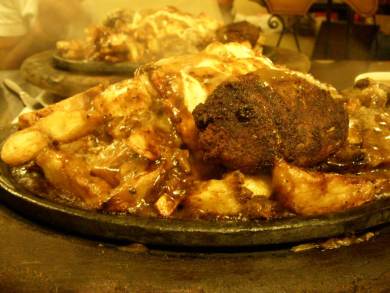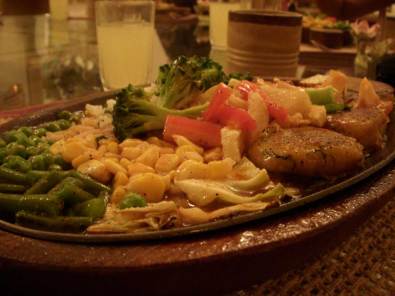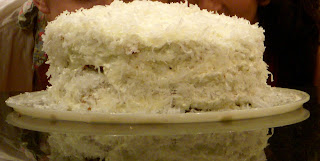---------------------------------------------------------------------------------------
eating with my eyes
January 15, 2008 by traderjanki
The sizzlers at Kobe Sizzlers
vs.
The sizzlers at my masi’s house
I prefer my masi’s sizzlers.
There’s something to be said for not feeling totally overwhelmed by your restaurant meal. I lost my appetite when confronted with the sheer quantity of steaming matter at Kobe Sizzlers. My masi’s sizzler, on the the hand, was food I could absorb with discerning colors and flavors. But Kobe Sizzlers has been a Bombay favorite for years, so maybe I’ve got it all wrong.
----------------------------------------------------------------------------------------H. took me to dinner at Kobe the second time we met and I didn't eat anything because all of it- the food- steaming, mountainous; the boy- cute, intelligent; the circumstance- set up by parents while I was seeing someone else...killed my appetite. So, H. left the dinner confused about why the girl who said she loves to eat refused to touch her food. I left, my mind a'jumble, and my tummy grumbling.
(sizzler steam clouds my camera lens)
But circumstances changed and 11 months later we found ourselves at Kobe again. Unlike the first time, I didn't order the same sizzler as H. (mushrooms, cutlet, cheese, fries). I think lighter, more Asian flavors work better on a sizzling plate simmering with sauce and that day I really wanted noodles. So I ordered a mushroom and noodle sizzler with veggies, and actually finished a substantial portion of the food.
(adequate destruction)
 H. loves Kobe. I don't mind going there once in a while, to relive those awkward memories...and actually eat that mountain of food.
H. loves Kobe. I don't mind going there once in a while, to relive those awkward memories...and actually eat that mountain of food.Kobe Sizzlers, 12/13 Sukh Sagar, Hughes Road, Bombay, 22-2363-2174






